Freesia is a beautiful and noble decoration of any subsidence. The birthplace of capricious beauty is considered warm and wet African lands, where it was discovered and then evilved at the beginning of the XIX century. Today, gardeners attract a variety of forms and shades of milling flowers. How to grow a plant and care for it, read in our article.
This perennial grassyball plant belongs to the Iris family to which about 20 charming species belong. Flowering freesia is always causing admiring glances. Fragrant large flowers in the form of bells and funnels can create a kaleidoscope from orange, cream, yellow, pink, purple, white and red flowers. Where the freesia blooms, the air is always saturated barely by the catchy flavor of the valley.
Varieties of culture
Armstrong Freesia
A branched stem of this plant reaches approximately 65 cm in height. In the spring, such freesia is in the outfits of a snow-white, pink, purple, scarlet or rich red. Fragrant bells are combined by 3 - 5 buds in lush bulletins. The varieties of this type of freresses are bangible with its flowers from May to June. The most impressive freesia of Armstrong is recognized as Cardinal Freesia.
Freesia is deadlined
Its stem rarely exceeds a height of 30 cm. The miniature variety is characterized by very fragrant flowers of all sorts of shades of yellow. There are also grades that give white flowers, for example, the Alba freesia.
Freesia hybrid
This type of flower looks more than the rest. The plant was obtained as a result of crossing the freesia of the broken and freesia of Armstrong. The culture is notable for a wide palette of shades, in which its buds are painted during flowering. The highlight of the flower is considered to be its zev, which, as a rule, is painted in a contrast color in relation to the petals. Pretty tall culture, the height of which in some cases exceeds 100 cm. The type of plant is distinguished by a naked strongly branching stem and a brownish scaly tuberukovka. The leaves of such a freesia are neat - thin, divided by half of the central vest. The most impressive representatives of the species - ballerina, Roses Marie and Pimperin. Admire these freesia varieties in the photo:
All kinds of plants have a variety of simple and terry form. The flower of the simple form is characterized by one near the petals, the flower of the terry shape - two or more. Given that the flower shops are offered today a wide range of freesia varieties and various combinations of varieties in one package, near their home you can grow a real work of art, consisting of the freesity of all kinds of forms and colors.
Decorative Flower Flowers
This charming garden plant is appreciated primarily as a cutting culture. This is not surprising because Flowers are freesia:
- become the main emphasis in the preparation of any flower composition. For this reason, the freesia is a frequent guest in wedding bouquets;
- for a long time retain a fresh attractive look;
- interested in mastted perfumes due to their fine aroma;
- became an integral element of landscape design;
- with proper care, they are happy with their abundance in both the garden and on the windowsill.
Freesia: Growing and Care
In the conditions of the greenhouse, the plant feels great for all year round. The bulbs are germinated in large wooden tanks or on racks in light and loose ground. A mixture of sheet or turf soil and peat is suitable. Culture is watered regularly and very moderately: after morning watering the earth around her trunk should be slugging in the evening. Flubber flowers are necessarily tied.
The optimal conditions for the germination of bulbs are considered to be a temperature of 20 ° C. In the cold season after 6 - 7 days after landing, the temperature in the greenhouse is reduced to 10 0S, and in the spring, the thermometer will not leave the mark of 20 0C. Sharp cooling or warming (below 2 -3 0C and higher 20 - 21 0C) spoils milling of freesia, deforming them. In winter, the flower needs additional lighting.
Growing freesia in open ground
Many are happy to invite the freesion on their household plot. The plant loves the sun's rays very much, but the wind does not tolerate. Successfully growing culture in loose, rich humus soil with sufficient drainage.
Before planting in an open soil, frenetian tubers provide a long rest period: about 3 months they are stored in a room with high levels of humidity at a temperature of about 28 - 30 0S. In the Frewemy Garden, planted when the danger of sudden frosts passes. After landing, they do not forget to mulch the culture using a neutralized peat. From the best side, the freesia will be able to show itself if it is satisfied with natural light: the flower loves the sunlight, but does not carry the aggressive action of the rays in too hot weather, therefore, the optimal conditions for normal growth of the flower are mild.
Flowerines appear by August, and the luxurious flowering of the freesia will delight you until autumn. The better the weather - the longer the flowers do not fade. Flowers for a bouquet can be cut when in inflorescences completely dissolved the petals at least two flower. Radiated flowers immediately remove, otherwise they will deprive the neighboring fresh buds and flowers of nutrients.
The graceful plant is characterized by weak blooms that are easily beaten under their own weight, so in the Freedomy garden it is not without a solid support. In truth, the easiest curvature of the stem looks even attractive, but the lack of support threatens the freesia premature hazard and reduces its life. As a support can serve as twine, stretched on several levels in the form of a grid. This design will need, as soon as the plants have reached a height of 15 cm.
Properly installed support will allow the freesia to save a vertical position that will provide the stalk and flower leaves uniform access of air, moisture and light. When the grid is tensioning, it is necessary to ensure that the distance between its cells does not exceed 10 - 15 cm. As the freesia increases, the grid increases due to new levels.
When the flowering ends, the clubnelukovitsa dig up - it is necessary to do it until the leaves are dried. The above-ground part of the stem is cut. Within 1 month after extraction from the soil, the clubnelaukovitsy are stored at a temperature of about 25 0C, then gradually reduce it to 10 0WITH.
At the beginning of the season of vegetation, the freesia especially needs loose lightweight, so do not forget to periodically loosen the land around the flower. Abundant and regular irrigation is also of great importance for the freesia - it will bloom only if the soil is constantly wet. Abundant flowering garden beauty lasts 3 - 6 weeks. During this time, it is watering to gradually cut up to full cancellation. It also needs to be remembered about regular spraying of the stalk and leaves of the plant, since the humidity of the air has an important meaning for it. Watering and spraying are carried out in the evening, given that the moisture must fully appreciate the soil and the freesia itself. In open soil, the flower feels good before the onset of frosts.
With the arrival of autumn (end of September - the beginning of October) freesia flows down, its leaves are painted in yellow, dry. It's time to dig the clubnellukovitsa plants from the soil, removing the stem and leaves. Clean the bulbs from the ground, cut the roots and old scales, hold them about 30 minutes. in an unconcentrized solution of mangarteauan or other fungicide (for example, Fundazole, Maxim) and give them 2 - 3 days to dry completely at a temperature of 25-28 0With in a well-ventilated room. Finally, the bulbs carefully come through to throw off the spoiled and fired. Healthy part is left for storage.
How to keep bulbs freshenia
To preserve the integrity of the bulbs of this culture, they are folded into the grid and leave in the room with a temperature of about 21 - 25 0With air humidity above average (about 80%). If there are no suitable conditions for storage, you can put under the mesh with the bulbs, a container filled with water. Landing material must be sorting out once a month and inspect for the subject of sick or rotten clubnellukov. 1 month before landing in the open ground, the bulbs are transferred to a cooler place (from 10 to 15 0WITH).
Flowers with experience are stored on the bulbs of the plant, burling them into a dry peat. If the harsh winters with strong frosts do not come to your area, you can leave the clubnellukovitsa in the ground, hiding them under the layer of foliage or fabric.
Methods of reproduction of freesia
The offspring from the plant you like can be obtained using its seeds or subsidiaries.
Reproduction of seeds
Sewing is planned for the period from April to May. During the day, the seeds are immersed in a manganese solution. The next day they are injected into planting boxes with a greenhouse substrate or a mixture of a turf or leaf land.
The first sprouts appear approximately 23-25 \u200b\u200bdays. When they are already well noticeable, they "move" to the greenhouse. In order for the young frequency of growing, they regularly take care of it: they are watching the light, they are watered, weed and feed potassium-based fertilizers and phosphorus every week.
When transplanting dicked seedlings to a permanent place, paper cups or special boxes are used.
Reproduction by subsidiaries
Strawberries are stored without any problems with adult bulbs. They are planted in the boxes with sand in March, and they are sent to the ground in April-May. For further good growth of the freesion in the landing pits, a certain amount of sand and tough coal is sued in equal proportions, after which they are shed a solution of "manganese". Saplings need aphaeancy and watering. In open soil, seedlings can be transferred with the landing box.
Frequency Frequency
So that the plant has grown healthy, it is periodically fertile. Freesia exhibits high sensitivity to the degree of soil salinity, in connection with this, only liquid solutions are suitable, and the dry mixtures are categorically contraindicated.
The first feeding of the freesia should take place in 1.5 - 2 weeks after landing: garden beauty will not refuse to fertilizer based on nitrogen. Furinations with high nitrogen concentrations need to be made 3 - 4 times during the actual growth of the flower.
Later, with the appearance of spikelets, instead of nitrogen fertilizer use the mineral composition, they also support the freesy when it is at the peak of flowering. Especially strongly plant needs mineral feeding with a sufficient amount of iron, boron, phosphorus, calcium, manganese and potassium. For the next feeding at the end of August, it is better to use superphosphate. With the arrival of fall, the freesia slows down its height: by mid-September, the plant shots are flowing, and the leaves begin to yellow. Flowerines are removed, but the plant continues to water and feed.
Experienced gardeners recommend the following drawing scheme: For the first time, fertilizers in the form of ammonium nitrate (20 g per 1 bucket of water) are introduced immediately after the appearance of germs, then every two weeks the freesity is fed by a composition prepared from 40 g of superphosphate and 20 g of potash salt by 1 bucket water.
Diseases and pests dangerous for the plant
Diseases from which gladiolus often suffer is a greater danger and for freesia. The sophisticated plant is very hard to carry fusariosis, gray, dry, solid, penicilosis and sclerocycial rot, lousy.
Viral diseases such as the beans virus and the freesia virus are able to destroy even very tall and healthy flowers. The causative agent of these diseases is the mosaic mosaic virus - causes the development of small wet spots on the leaves of an infected plant, which after a while dried, leaving behind the bright traces. If there are a lot of such labels, the leaf is dying. Because of the malicious virus, the bulbs of the freesia suffer: they are covered with rusty stains. Beautiful blossom for sick freesia becomes practically impossible task. The plant forms a curved arrow on which buds with greenish petals subsequently appear. Virus distributors consider TRU. Sick plants need to be destroyed to protect healthy adjacent freesia.
Disinfection is carried out as preventive measures, washing the dug bulbs. The same procedure is carried out before planting the plant in open ground. For processing, zircon is used, a solution of manganese, funds.
Fresh-growing freesia often makes a web tick, triples and aphids. Detected pests are eliminated using a soap solution or any insecticidal agent.
Freedy health depends on compliance with the rules of agrotechnology:
- For watering the plants, only the dilated warm water is used.
- Watering is carried out no later than 5 hours in the evening, in order to dry the leaves of the freesies to dry.
- Neighboring plants are not planted too tight, otherwise air stagnation with wet weather can not be avoided.
The freesia, the care of which is carried out in all the rules, thanks you by riot flowering and luxurious colors.

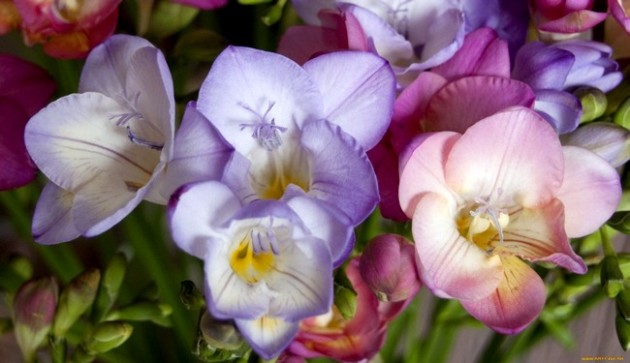
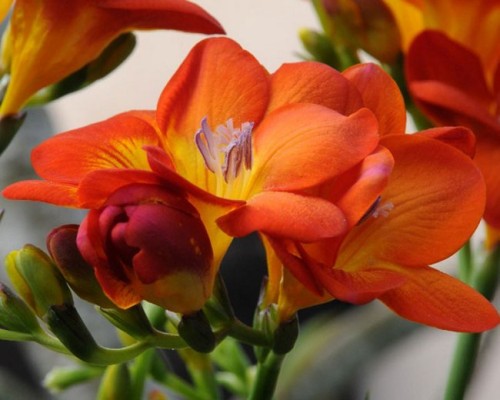
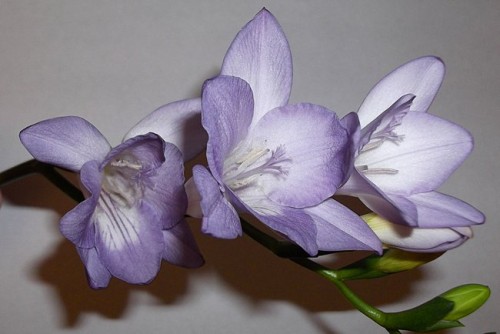
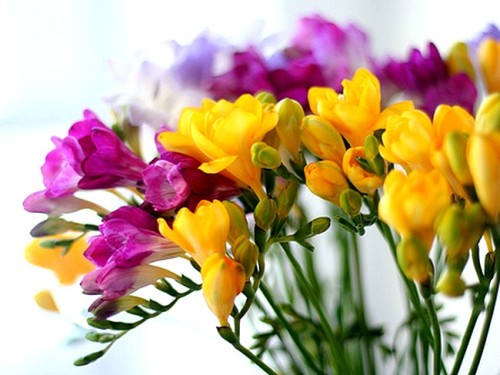
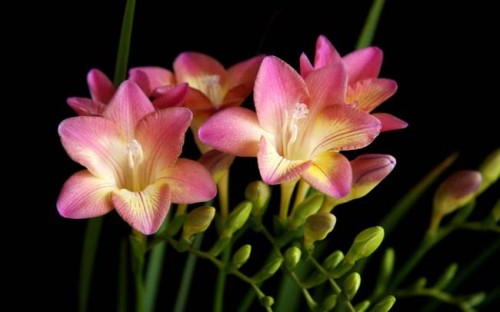
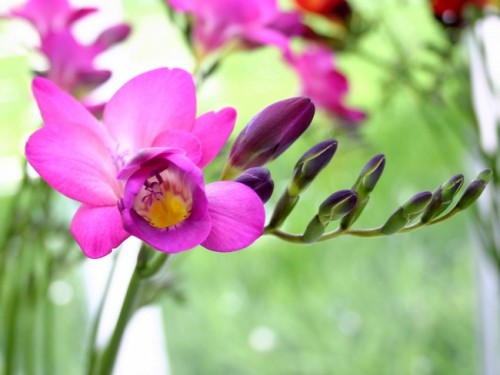
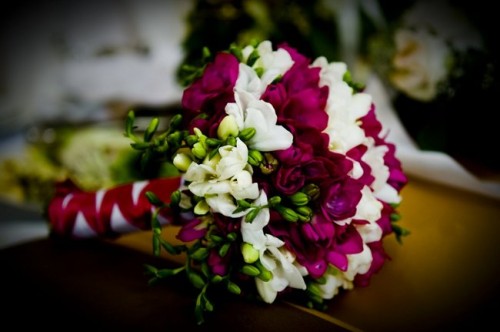
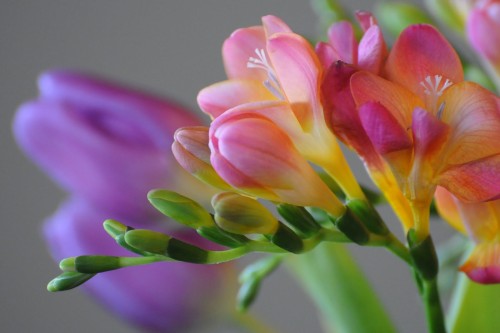
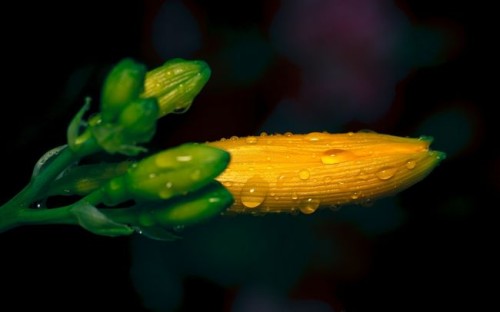
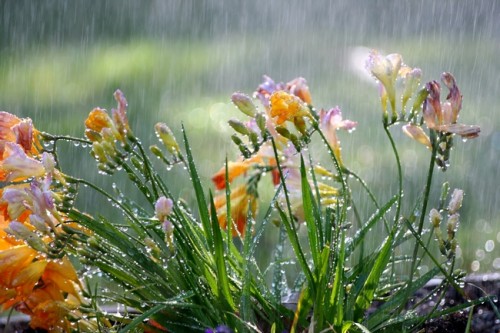
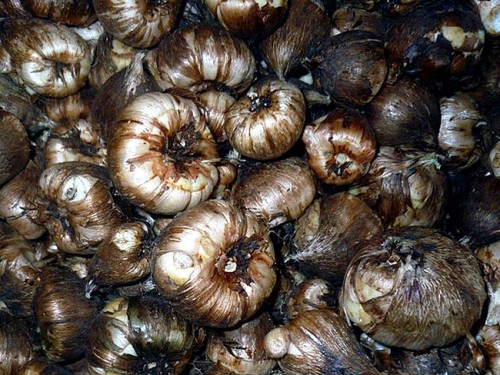
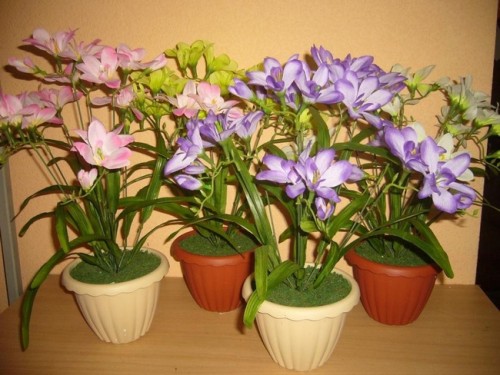
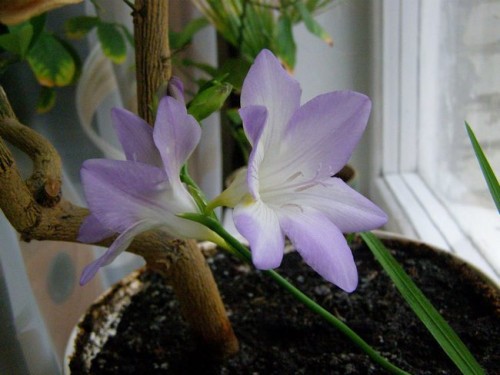
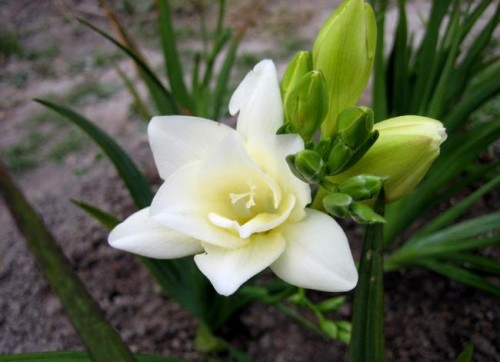
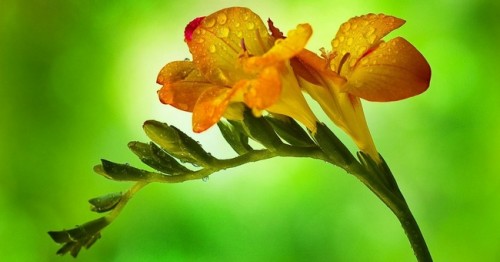












 Start a discussion ...
Start a discussion ...